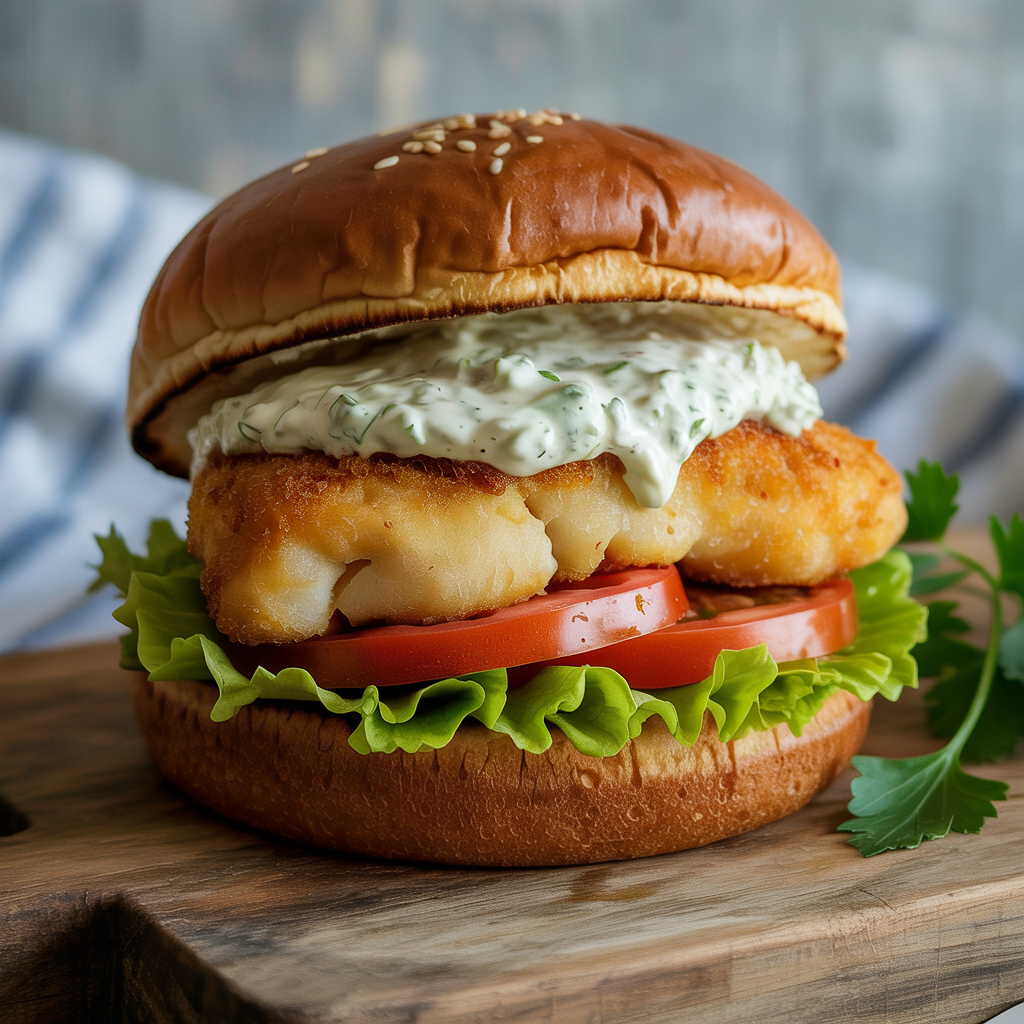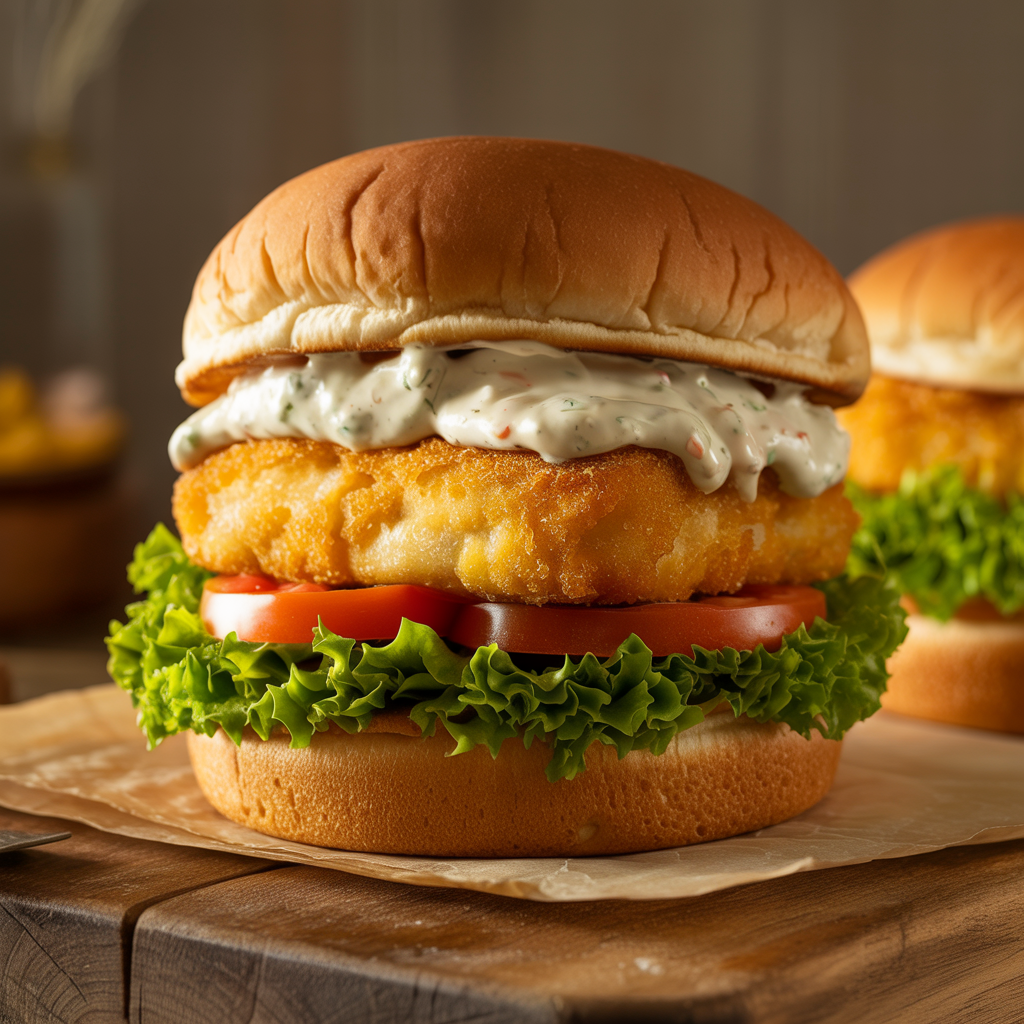Crispy Fish Burger Recipe: A Delicious Homemade Favorite

Discover how to make a crispy fish burger at home with this easy recipe. Perfect for family dinners or casual gatherings, it’s a healthier alternative to fast food.
There’s something undeniably satisfying about biting into a crispy fish burger. The golden crust, tender fish, and flavorful toppings come together to create a meal that’s both comforting and indulgent. This homemade fish burger recipe brings the classic taste of your favorite seafood sandwich right into your kitchen, offering a healthier and more customizable option than takeout.
Why You’ll Love This Recipe
• Quick and Easy: Ready in under 30 minutes, making it perfect for weeknight dinners.
• Healthier Choice: Baked or pan-fried options reduce the need for deep frying.
• Customizable: Adjust the toppings and sauces to suit your taste preferences.
• Family-Friendly: A hit with both kids and adults alike.
• Freezer-Friendly: Prepare patties in advance and freeze for later use.
Ingredients
For the Fish Patties:
• 1 lb (450g) white fish fillets (such as cod, haddock, or tilapia)
• 1 cup panko breadcrumbs
• 1/4 cup all-purpose flour
• 1 large egg
• 1 teaspoon garlic powder
• 1/2 teaspoon paprika
• Salt and pepper to taste
• 2 tablespoons vegetable oil (for frying)
For the Tartar Sauce:
• 1/2 cup mayonnaise
• 1 tablespoon sweet pickle relish
• 1 teaspoon lemon juice
• 1 teaspoon Dijon mustard
• Salt and pepper to taste
For Assembly:
• 4 burger buns, toasted
• Lettuce leaves
• Tomato slices
• Red onion slices (optional)
• Cheese slices (optional)
Ingredient Swaps:
• Fish: Salmon or canned tuna can be used as alternatives.
• Breadcrumbs: Regular breadcrumbs or crushed cornflakes can replace panko.
• Sauce: Substitute tartar sauce with aioli or spicy mayo for a different flavor profile.
Instructions
- Prepare the Fish:
• Cut the fish fillets into smaller pieces and pat them dry with paper towels.
• Season with salt, pepper, garlic powder, and paprika. - Set Up Breading Station:
• Place flour in one shallow dish.
• Beat the egg in a second dish.
• Place panko breadcrumbs in a third dish. - Bread the Fish:
• Dredge each piece of fish in flour, shaking off excess.
• Dip into the beaten egg, ensuring it’s fully coated.
• Press into the panko breadcrumbs until well-coated. - Cook the Fish:
• Heat vegetable oil in a skillet over medium heat.
• Fry the breaded fish pieces for 3-4 minutes on each side, or until golden brown and cooked through.
• Transfer to a paper towel-lined plate to drain excess oil. - Prepare the Tartar Sauce:
• In a small bowl, combine mayonnaise, sweet pickle relish, lemon juice, and Dijon mustard.
• Mix well and season with salt and pepper to taste. - Assemble the Burgers:
• Spread tartar sauce on the bottom half of each toasted bun.
• Place lettuce leaves, a slice of tomato, and a piece of cooked fish on top.
• Add red onion slices and cheese if desired.
• Top with the other half of the bun and serve immediately.

Tips for Success
• Dry the Fish: Ensuring the fish is dry before breading helps the coating adhere better and results in a crispier texture.
• Consistent Sizing: Cut fish pieces uniformly to ensure even cooking.
• Oil Temperature: Maintain medium heat to prevent the coating from burning before the fish is cooked through.
• Make-Ahead: Prepare and freeze breaded fish pieces for up to a month. Cook from frozen, adding a few extra minutes to the cooking time.
Frequently Asked Questions (FAQ)
Q: Can I bake the fish instead of frying?
A: Yes, place the breaded fish on a baking sheet lined with parchment paper, spray with cooking oil, and bake at 400°F (200°C) for 12-15 minutes, flipping halfway through.
Q: What sides pair well with fish burgers?
A: Classic choices include coleslaw, sweet potato fries, or a simple green salad.
Q: How do I store leftovers?
A: Store cooked fish patties in an airtight container in the refrigerator for up to 2 days. Reheat in the oven or skillet to maintain crispiness.
Related Recipes
• Homemade Tartar Sauce Recipe
• Baked Sweet Potato Fries
External Resources
• USDA Guidelines on Safe Cooking Temperatures (https://www.fsis.usda.gov/food-safety/safe-food-handling-and-preparation/food-safety-basics/safe-minimum-internal-temperature-chart)


